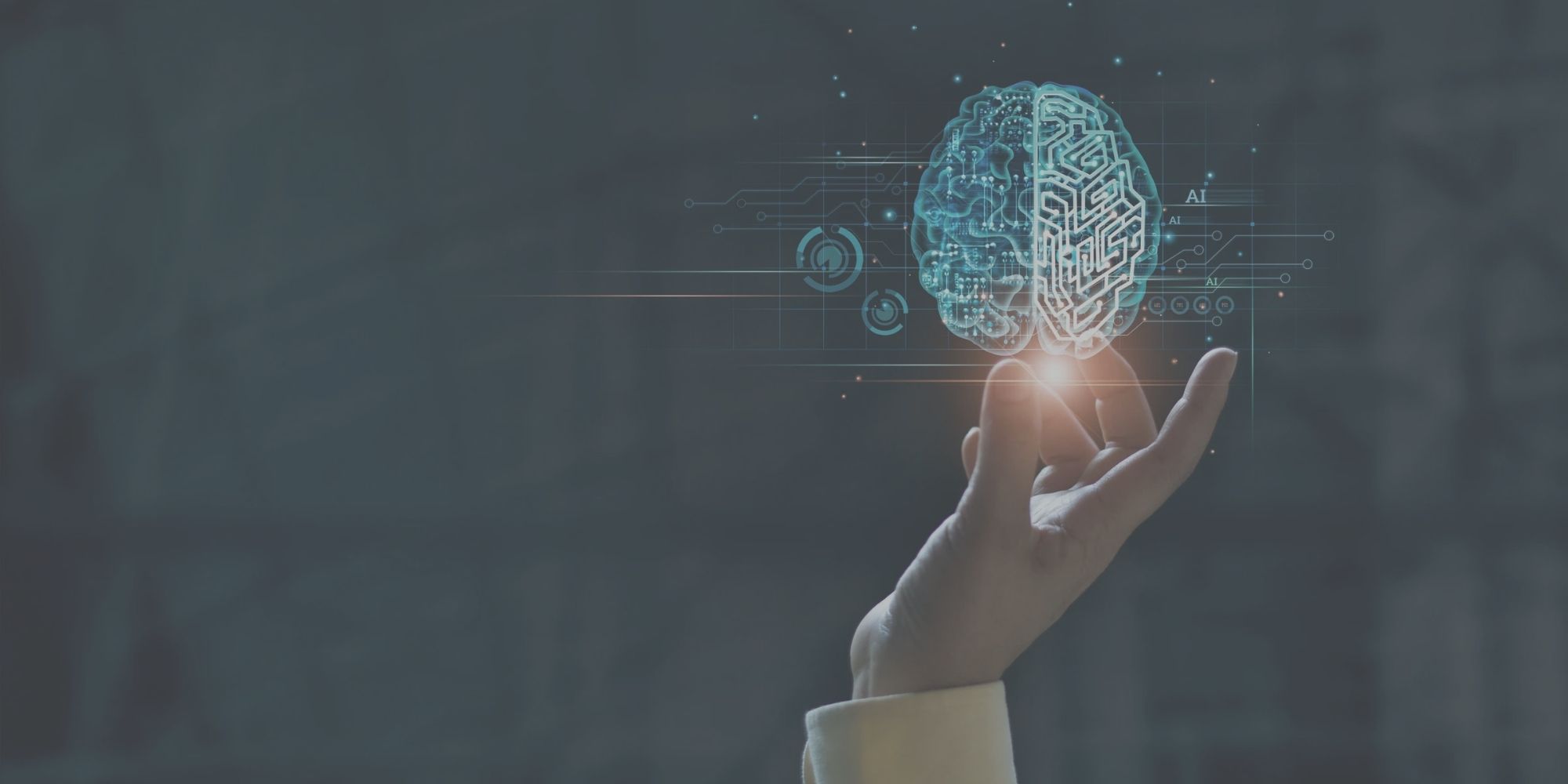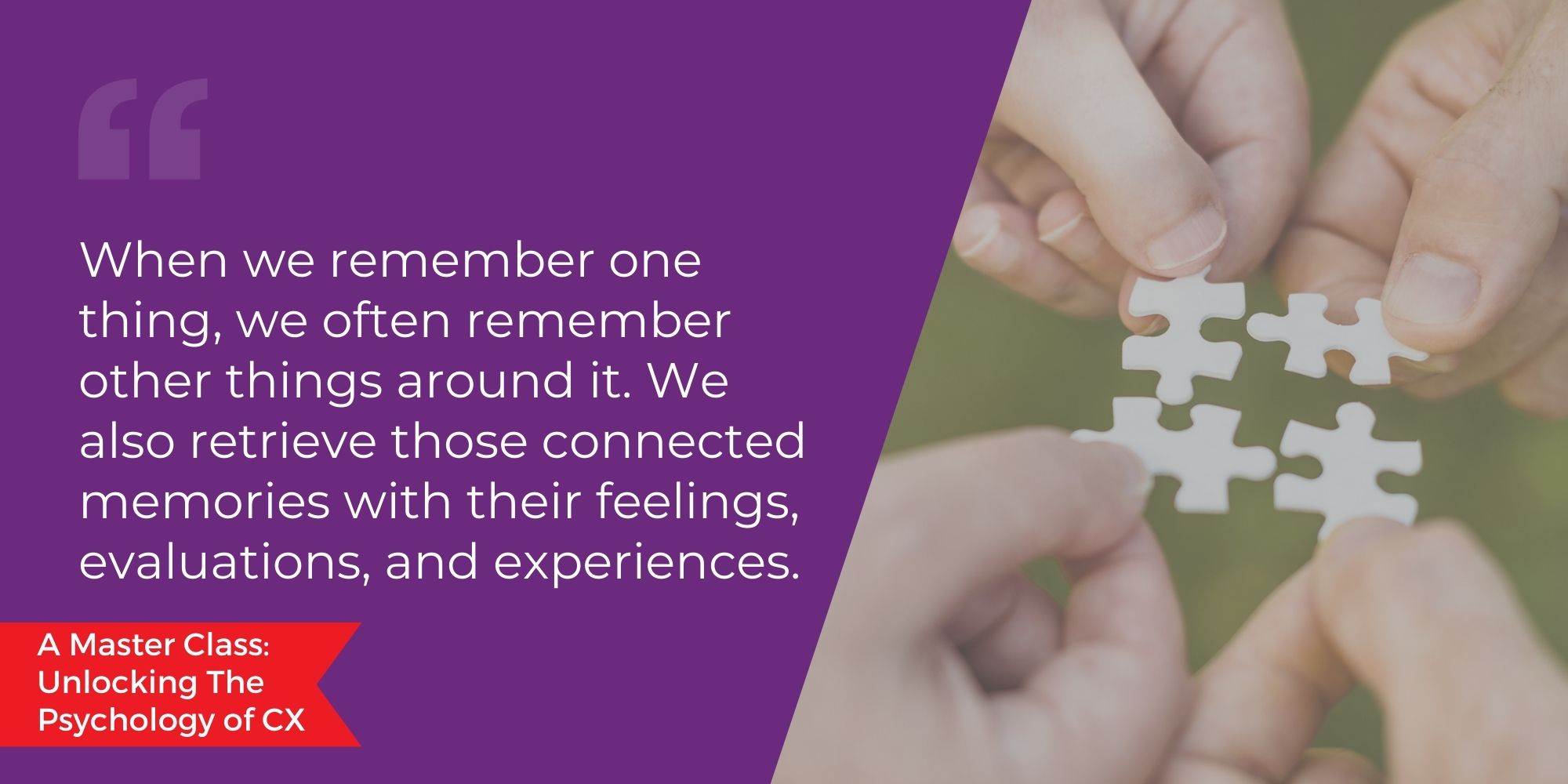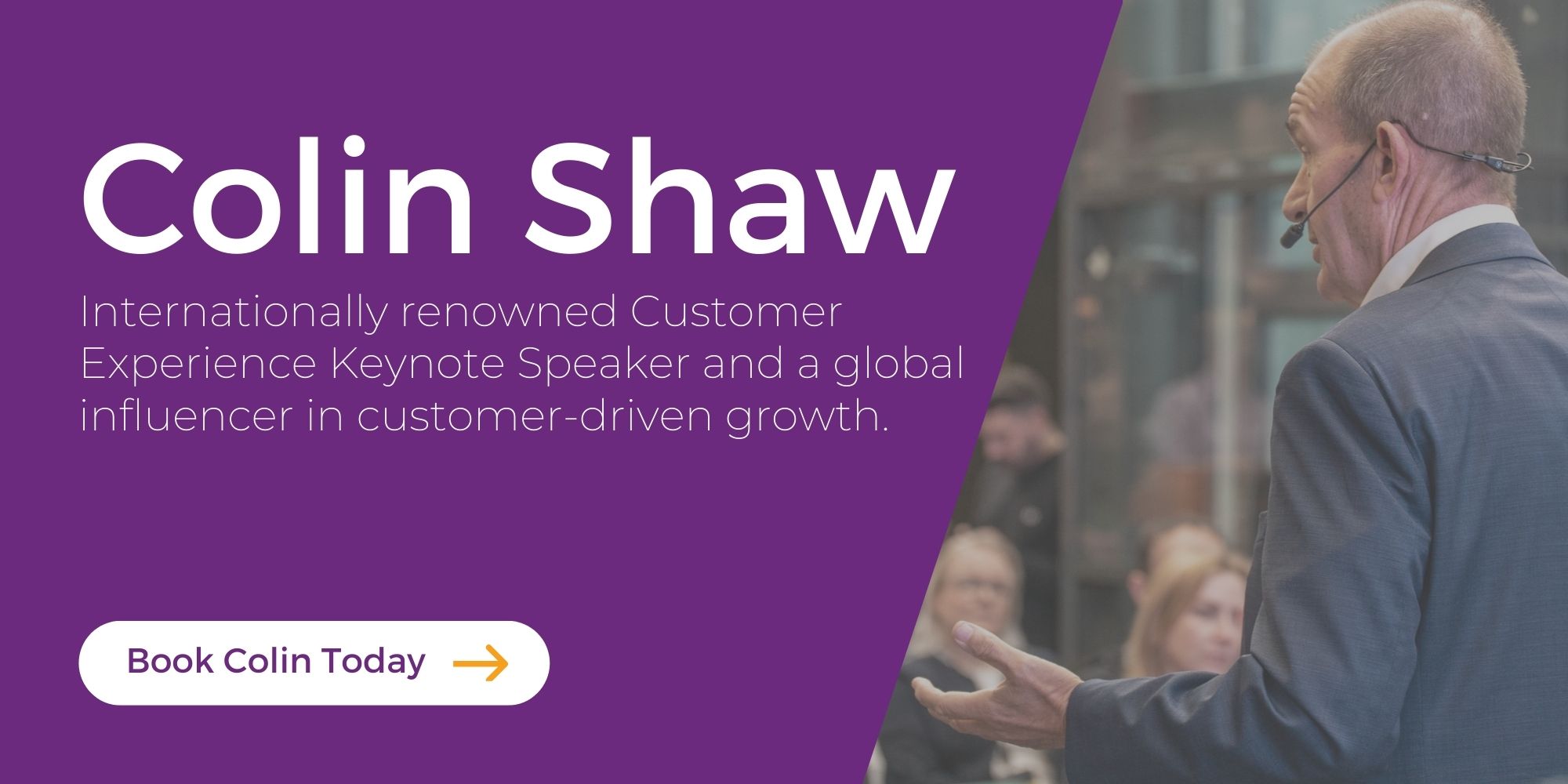A Master Class Part 2: Unlocking the Psychology of Customer Experience
Learn more about Colin Shaw: Join over 80,000 people on our LinkedIn Newsletter list or visit our website for more great podcast episodes.
Listen to the podcast:
This issue is the second in an eight-part master class series unlocking the psychology of Customer Experience. In our last episode, you might recall that we covered some common cognitive shortcuts or heuristics that customers use in their decision-making. Today, we are exploring the broad concepts regarding the significance of memory to Customer Experiences.
In my last book, The Intuitive Customer, my coauthor and I asserted that customer loyalty is a function of memory. Loyalty is tied to how you remember something, whether that is a person, an organization, or a Customer Experience. Therefore, the formation of memories is essential to your customer experience design.
Areas of Memory Research Start with Encoding
There are three different areas of memory research surrounding how memories form. The first is input, meaning how we have new entries into our minds. Academics call this encoding.

The concept of encoding has various effects, including the Primacy Effect. The idea behind the Primacy Effect is that the first bit that gets encoded intends to be remembered. From an experience perspective, the Primacy Effect means that what happens early in the experience is remembered.
Another encoding effect is the Recency Effect, which is the opposite of the Primacy Effect. It describes how the last parts tend to encode well, too.
Finally, there is the Frequency Effect. This describes how repeated actions increase the likelihood of retention and recall.
For example, if you are buying a TV and comparing a few, you will likely remember the most about the first and last TVs you looked at and then the one you might have looked at more than once.
How Do We Retrieve What We Encode?
The second area of memory research concerns retrieval effects. This area examines how, once something has been encoded, we pull it out of storage. It also covers what is more likely to get pulled and used. One of my favorite concepts resides in this area: the Peak-End Rule.
If you have been reading my newsletter for a while, you might remember the Peak-End Rule, first introduced by Nobel-prize-winning economist Professor Daniel Kahneman. It describes how we remember the emotion that we felt the strongest during an experience and how an experience concludes.
This memory concept is different from Primacy, Frequency, and Recency effects. Those are applied to episodic memory, which is remembering instances or facts. The Peak-End Rule applies to evaluative memory.

The Peak-End Rule helps us describe and experience. Suppose I ask you about a movie you just saw. To answer, you will reflect on the experience and evaluate it. However, you won’t pull up every moment of the film; instead, you will pull out the most intense part for you and how it ended. Using those two points, you will average them together and give me an evaluation of the whole experience.
What a Fishing Net Means for the Structure of Memories
If you were to picture the memory structure, what do you see? Bugs Bunny used to have a room full of filing cabinets that he would rifle through to find the memory he wanted. That metaphor might work for rabbits in the post-war era, but human memory is different.
When you consider memory, there are the individual memories that you form. However, memories are never single entities. They connect with other memories in a larger structure. A helpful structure to picture these connected memories is a fishing net. Each memory is a knot in the net; the larger net is the collective memories connected to the individual knots.
A fishing net is a helpful metaphor because it demonstrates how interconnected memories reside in your mind. If you imagine a fishing net lying flat at the bottom of a shallow pool of water, and you reach down below the surface and grab a knot to pick it up, you will see the knot get closer to you. However, you will also see the connected knots rising closer to the surface.
This metaphor of drawing the fishing net out of the shallow pool with a knot illustrates how when we remember one thing, we often remember other things around it. We also retrieve those connected memories with their feelings, evaluations, and experiences.

For example, if the memory you want to retrieve is about your last vacation, you might remember the best part of the vacation and how it ended first (because of the Peak-End Rule). However, you might also remember the person you sat next to on the flight that hogged the armrest or the excellent gelato you got at that stand in front of the hotel. You might also remember the drive from the hotel to the airport when there was more traffic than you anticipated or how the water on that beach seemed much warmer than the beaches at home. All these memories are knots in the fishing net, connected to the vacation, and retrieving one brings all the others along, too.
The fishing net metaphor here also demonstrates conscious thought versus subconscious. If you think of conscious thought as the knot held above the surface of the shallow pool, you can easily also picture subconscious thought as all the memories close by just under it. The knot you have in your fingers is the memory in your mind; the other knots submerged below are the subtle influences surrounding it.
The subconscious memories offer emotional influences of happiness, sadness, uneasiness, or joy associated with the conscious memory we recall. However, we can’t always explain why we feel that way regarding this memory.
So, What Do We Do With This Now?
For something to be remembered, it needs input, to be recalled at the right time, and to have a structure that makes it useful to customers. Knowing that, you need a plan for each of those areas.
You can use many tactics. For example, regarding encoding, you can introduce something first to take advantage of primacy. Then, you can add another essential bit at the end to capitalize on recency or repeat it a few times to use frequency.
There is also the appeal of the information to consider. For example, humor or emotional connection facilitates people remembering things; big spreadsheets of facts and figures or enormous blocks of text usually do not.
Remember, memories are being formed right now. Without a strategy for memory formation, you’re leaving a critical element of your experience up to chance. Deliberating over what you can do to facilitate memory formation is a wise investment of your resources.
So, if there are three different parts of memory formation, what is your plan for each?
Start by determining what part of the experience you want people to remember. Then, choose a strategy for ensuring that they remember it.

Also, remember that some parts of the experience are more important to memory formation than others. For example, the Peak-End Rule points out that people remember the most intense part of the experience and how it ended. What are you going to do to enhance these moments?
It would be best if you had a strategy, too, regarding recall. For example, if you want your customers to remember something, you can give them a little nudge in your follow-up communication to help them do so.
It is also important to recognize that memories change over time, particularly as the social environment changes. Managing these externalities is impossible. So, how can you reinforce a great experience to keep the memory as it is despite the changes of time?
Remember also that none of these concepts exists in isolation. Like the memories in the fishing net knots, the concepts of our master class series are connected, too. So, consider how thinking shortcuts like Focusing have a particular value that customers choose to compare to others. How will customers remember that value from your experience, and how can you enhance that?
For example, suppose you are a family vacation company, and you know that customers choose you for the kids’ programs you offer. How will you remind them of these great programs when families book their vacation again next year?
Memory is a key part of driving customer loyalty. Therefore, it is essential to manage how emotions form. It’s happening already; the problem is you don’t control it.
However, with so much riding on the memories that form, can you afford to refrain from being deliberate about how customers remember your experience?

Colin has spoken at hundreds of conferences, including some of the world’s largest brands. Talk to Colin about how he can speak ‘in person’ or ‘virtually’ at your conference. Click here.


